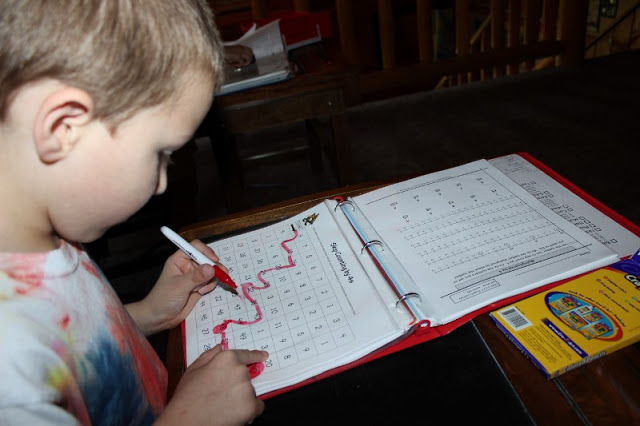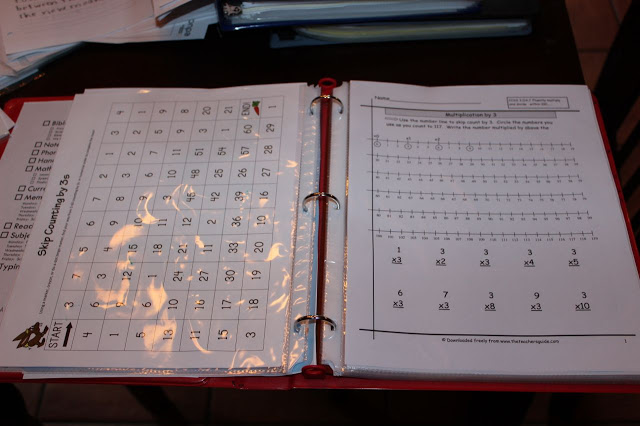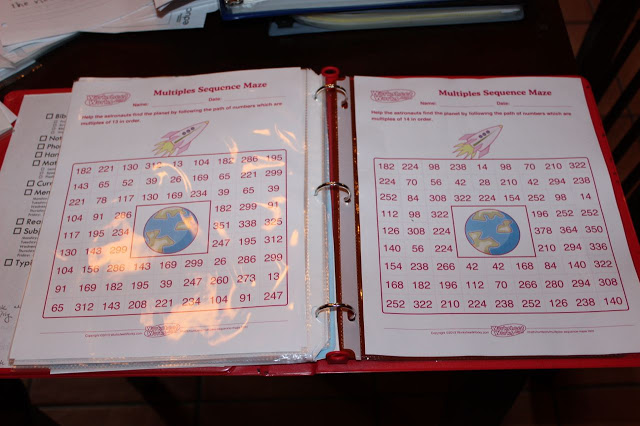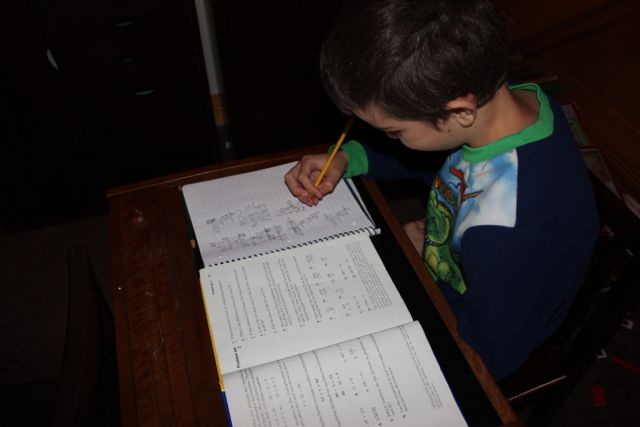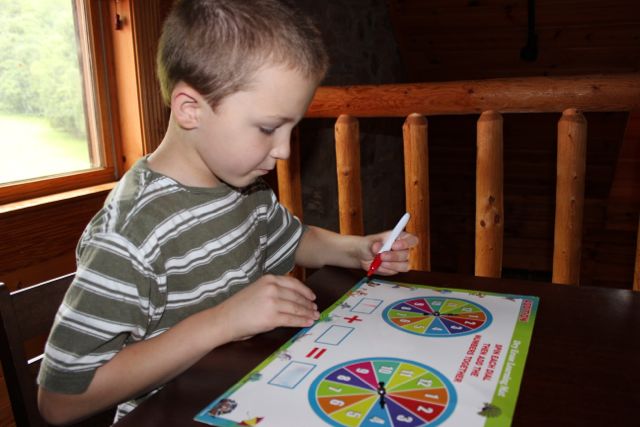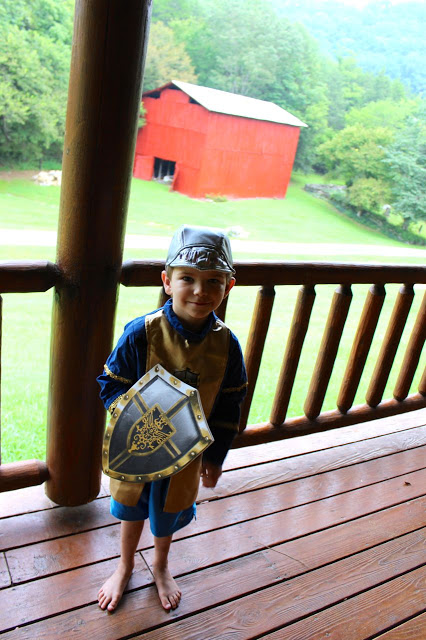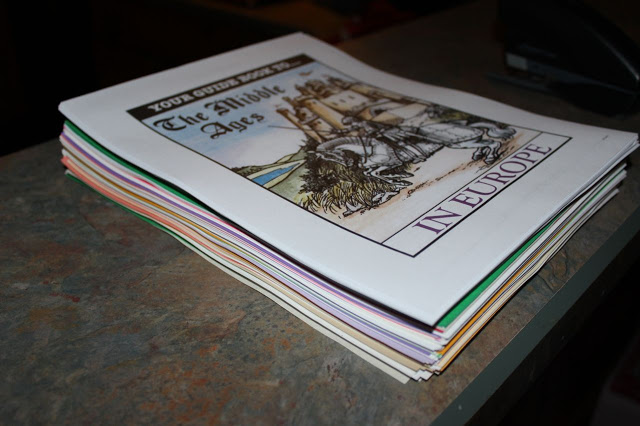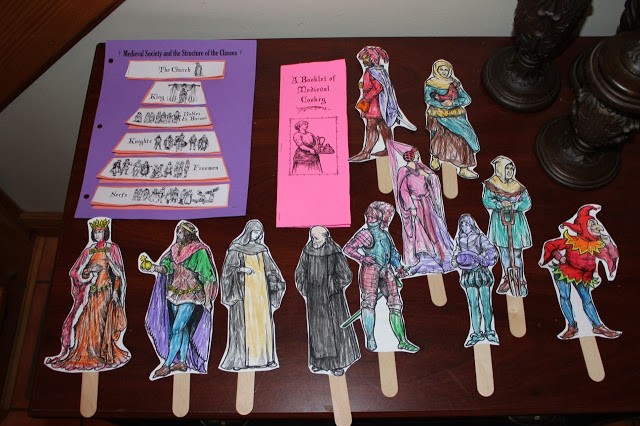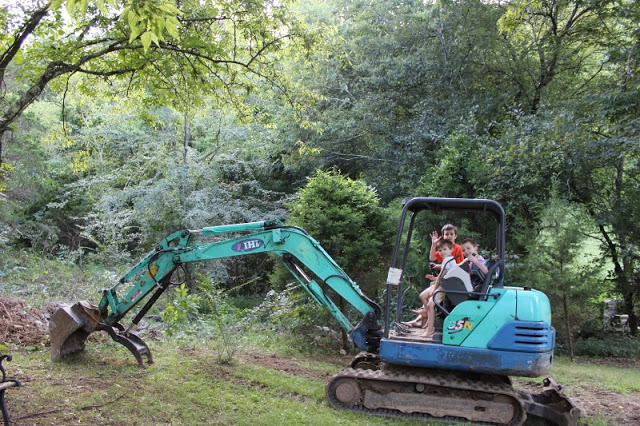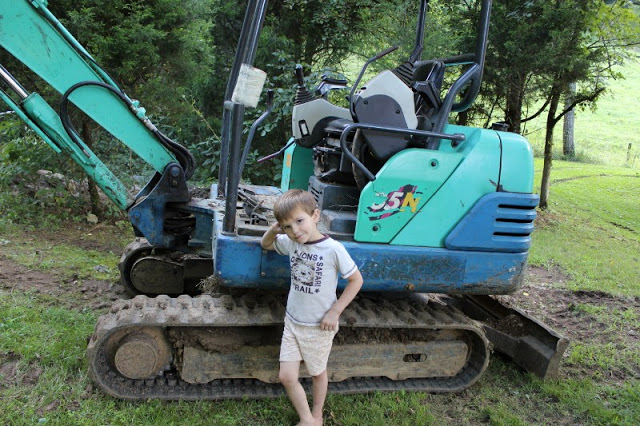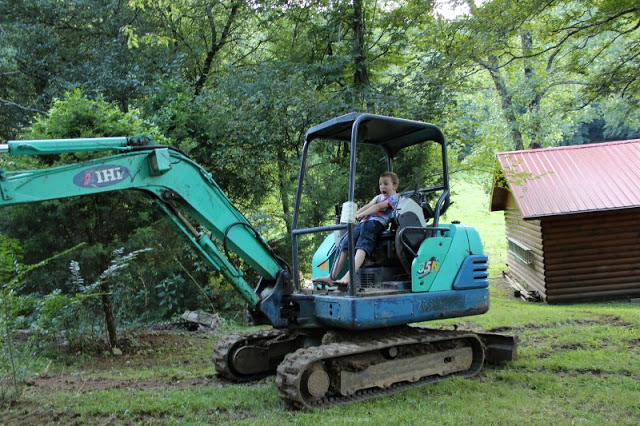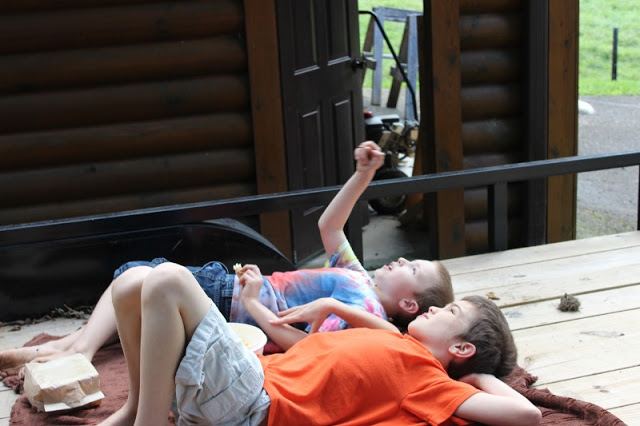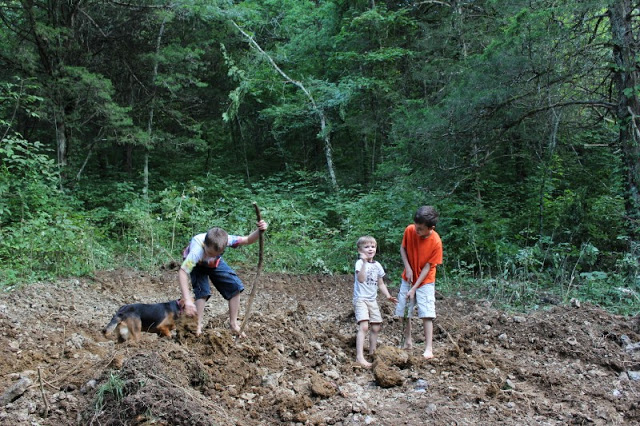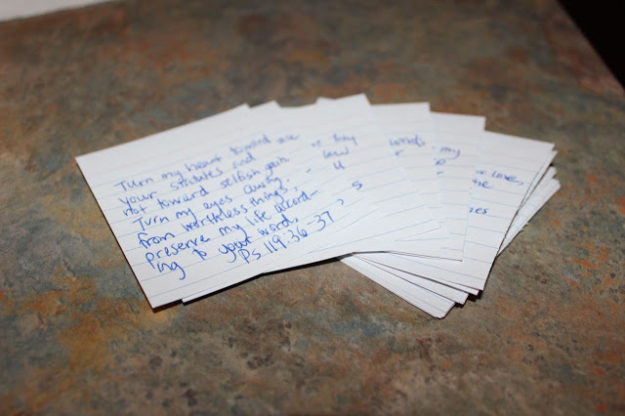
As we crank up another school year, our schedule has sort of looked like this:
- Prayer & Reading Connections at Breakfast
- Bible & Notebook
- Math
- Language Arts (& Latin)
- Lunch & Memory Work Review
- Alternating between reading and other stuff for the rest of the day
On our first day of school, the boys woke up to a “special” breakfast of Monkey Bread to mark a “special” day of starting anew. [Any time we have a sugary-sweet breakfast like this, it’s a “special” breakfast because I don’t normally cook sugary-sweet stuff for breakfast.]
As a general start to our day, we pray using our prayer chart at breakfast, and then I read out loud to the boys from our “connections” selections. Each day we’ll read a short selection from one of the following: Trial & Triumph, Window on the World, Creation Science for Kids, Tales from Shakespeare or Then Sings My Soul. [Refer to our Reading Plan for how it is split up; I’ve changed what our morning reading is for science now that the Creation Science for Kids: Ecology & Astronomy book is available.] Our first two weeks, I simply introduced a few of these books to the boys.
After breakfast, our first block of time is Bible & Notebooking. Together, Bible & Notebook time take us about 45 minutes to complete.
Bible: We use Grapevine Studies for our Bible time because it easily incorporates: learning the events and people of the Bible [the grammar of the Bible], scripture memory work, copywork, and drawing. But most of all, we use it because the boys love it.
Notebook: We are still getting into our routine here because I had run out of 2 of our 4 color toners and could only print in magenta or yellow. (I defaulted to printing everything in magenta, much to the chagrin of the boys, but, alas, our new toner cartridges have arrived!) For printables of each item, you can visit our classical notebook page.
David’s favorite way to practice his math memory work is using skip count mazes. (Update several years later: We no longer use skip counting but instead use multiplication songs from the get-go.)
But I’ve included a variety of skip-count-practice options in his notebook,
as well as addition practice pages…
Stephen’s notebook has multiplication-math-fact-practice drills, and Levi’s has writing-numbers-and-letters sheets – both are from PrintNPractice.
We also work on our continental blob mapping.
I didn’t capture photos of us working on each section, but it takes about 30 minutes to go through the tabs in our notebook, which includes map practice. Here’s our schedule of how we use our classical notebook.
[This is from our 10-year-old’s checklist – Our 4-year-old’s is a bit different, of course, because he is only 4. If you’d like to see our schoolday checklists, you can download them here: PDF version | DOC version. As always, it’s a work in progress, but this routine is working well for us this year. Note that these are more like guidelines instead of hard-set expectations. I am one of those people who constantly forgets what I’m saying mid-sentence; it helps to have a checklist to keep me in line!]
Again, for printables of each item, you can visit our classical notebook page.
Math: Aside from the math drills in our notebooks, we are simply using Saxon [and flashcards]. After using about 5 different math programs in the past three years, we have gone full circle back to Saxon, and I’ve breathed a huge sigh of relief. The main thing here is that I’ve broken away from the “you-must-finish-one-lesson-per-day” mentality and am going at whatever pace equips our boys for success. That means David [age 7] works on several lessons per day, while Stephen works on one lesson every two days. (Stephen [age 10] is learning to transcribe problems onto paper instead of using workbooks, and he is working in Saxon 7/6, so we need to go at a much slower pace as he learns the skill and discipline of completing his math work neatly and double-checking his answers.)
This year we’re incorporating more playing-with-numbers math practice using various games and activities we’ve had stored back for a time such as this. [Such things are usually available at Dollar Tree.]
What’s going on with Levi during this time? He’s working in dot-to-dot and color-by-number books and simply learning to write his numbers and letters. And he plays a lot with his construction tools when I am focusing on the other two.
Language Arts [& Latin]
Language Arts is very different for each of our children. Our 4-year-old is simply learning to write his name, letters, and numbers. (You can check out The Script-n-Scribe Roller Coaster Writer for this.) For our 7-year-old, we use All About Spelling as our core language arts program. It incorporates sentence dictation, which I’ve found is sufficient English grammar & composition for him at this stage [2nd grade]. We’ve also found IEW’s Fix-It Grammar and IEW Bible Heroes (click here for the Teacher’s Manual) to be helpful resources to use at this stage.
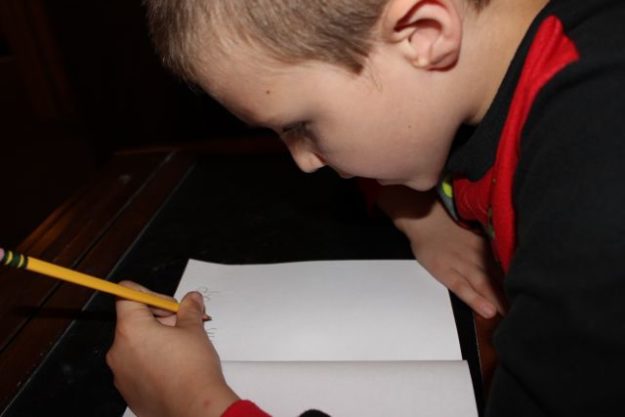
Our 10-year-old uses All About Spelling for his spelling practice (we prefer it over the lists in the back of the Essentials Guide), the Essentials of the English Language (EEL) Guide for English grammar, and IEW – Medieval-Based Writing Lessons for writing/composition. When I am working with Stephen on various EEL/IEW tasks, the other two are usually playing games together.
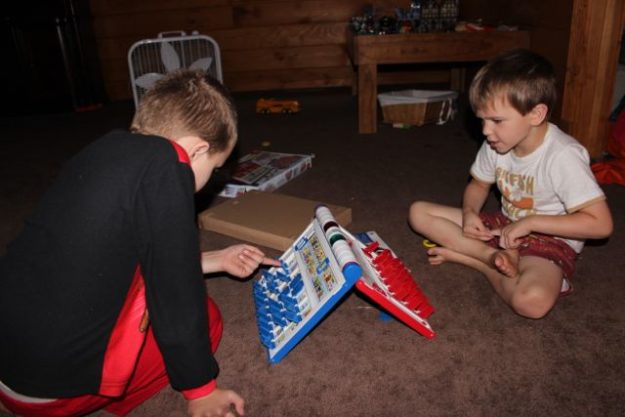
During language time we also do a short 10-minute lesson of Latin. Using a Latin curriculum is new to us this year, but Latin’s Not So Tough has really made it not so tough. Here I quote one of our facebook posts:
Stephen’s two cents: “It’s cool. It’s cool. And they’re right. It’s not so tough…” [That’s the opinion of a 10-year old boy who is simply memorizing some extra Latin vocabulary at this point…] I personally like that the lessons take him only about 10 minutes. I’ve always thought it would be too much to add some extra Latin in at the grammar stage, but we can handle just 10 minutes!
We may kickstart our language lessons with this each day; we’re still playing around with our schedule right now.
Memory work: We’ve been reviewing memory work randomly over the course of the day. I’ve created several games that our children really love. When our children pick up my review-game creations and play them without my requesting it, I consider the idea a success!
Reading & Other stuff: Reading is something that goes on throughout our day – at the breakfast table, during breaks, after lunch, before bedtime, etc. Some of that time is independent reading, some of it is read aloud time. Click here for more about our reading plan.
Some folks would call the other stuff that we do “fluff,” but it is the way our children pursue their imaginations. I leave the rest of the day open, and we end up with knights in shining armor trying to save Princess Mommom from the dark dragon.
Or we put on puppet shows using paper puppets they’ve made. Or they make play-doh concoctions for me to pretend-eat. Stephen works on papercrafts. We play board games. We explore the vegetable garden and observe squash bugs laying eggs before destroying them. You can call it extra fluff, but even if you don’t plan for it, it will happen (or at least it should happen!).
I seriously do not plan all this stuff. They just do it.
Over the past two weeks, we’ve done things like play review games for our Western Civilization study…
and our Middle Ages Project Passport Study. The way this works is I print out a stack of papers,
and then the boys find something they want to do in that stack,
which also results in more puppet shows and other sorts of entertainment. This leave-it-out-where-they-can-see-it method is one I employ quite frequently because of how effective it is.
After I stored away St. Basil’s Cathedral for at least a month this summer, Stephen begged to work on it again. I was hoping we would make it like a real cathedral and not finish it in our lifetime. But, believe it or not, he is much more stubborn perseverant than I am.
Although it is lovely, I highly don’t recommend doing this. Stephen loves papercrafts so much, and without that passion it would be impossible. But for those who love paper crafts, there are many, many templates available on Canon’s Creative Park website.
Finally, my reason for writing this is to capture our schedule for this year and to chronicle our own family’s memories. You need not follow what we do. Remember: Reading, wRiting, aRithmetic, and Recitation. And, of course, the all-important use-your-imagination and go-outside-and-play!
The following photos are especially for my husband… we miss you, Gary!




